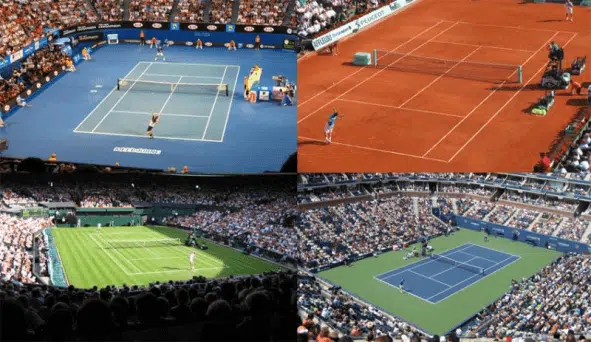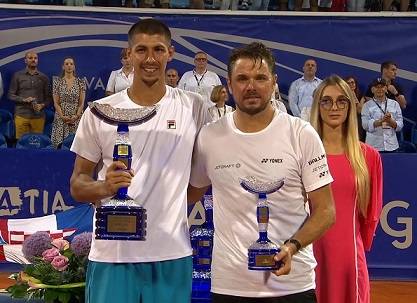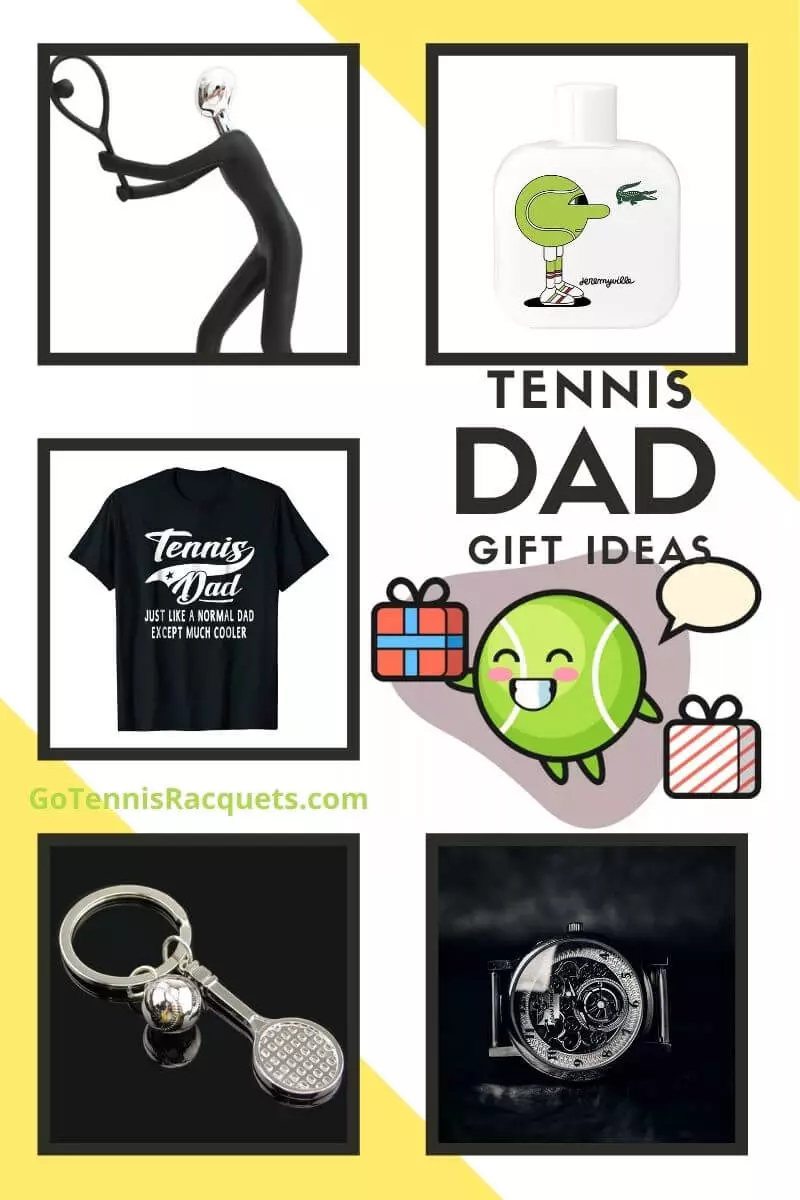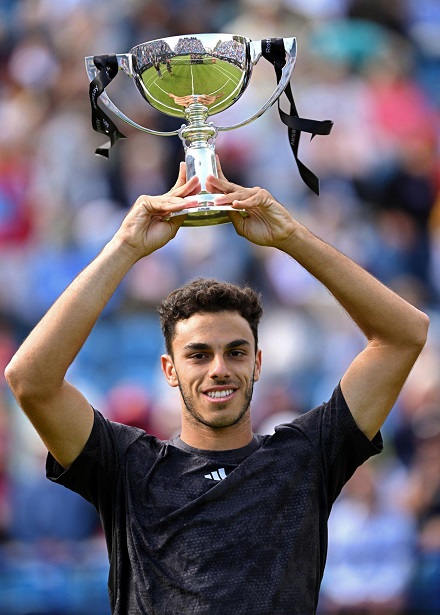Difference Between Tennis Courts

In tennis, the court surfaces play a very important role in most factors during a match, including the style of play, tennis ball used, tennis gear, and more.
Learning the differences between the courts can make a tremendous and positive impact on your play or help you better understand and appreciate the many complexities of this sport.
In essence, a tennis court consists of a rectangular area, split across the middle with a low-hanging net. All professional, amateur and recreational matches follow this exact format with the biggest discrepancies observed in the court surface.
The court surface refers to the material composition of the court on which the game is played. There are many types of court surfaces over 10 in fact but most can be organized into 3 main categories and types clay, grass, and hard court surfaces are the most commonly occurring and only recognized court surfaces by the ATP and WTA- the international tennis organizations for male and female professional tennis.
Carpet courts were another prominent court surface but their presence at the main top-level ATP and WTA events has been completely eradicated. The Carpet court surface will receive an honorable mention in our discussion today.
What impact do the different tennis court surfaces have on play?
As described earlier, court surfaces are a major contributor to on-court play tactics and gear. The following aspects of tennis are influenced by court surfaces:
- Style of play
- Tennis ball used
- Tennis shoes use
Each of these factors, along with major tournaments and famous players will be discussed in this article. A briefing of all the differences is given below with a deeper dive into each clay court surface following it.
- Read Also: Most Expensive Tennis Balls
What are tennis court surfaces?
| Court | Style of Play | Tennis Ball | Tennis Shoes |
| Clay | Slow | Regular-duty felt balls | An outsole that releases clay from its grooves, Tight upper, Lateral support |
| Hard | Medium | Extra-duty felt balls | A tough outsole, Strong upper, Cushioning and bounce-back |
| Grass | Fast | Modified Extra-duty felt balls | Flat outsole, Flexible upper, Good grip |
1: Clay Court Surfaces
Clay court surfaces are possibly the most unique of the main types. True to its name, a clay court’s surface layer is made of a finely crushed aggregate that uniquely allows players to slide on the court. The composition makes the clay court slow and bouncy and a very high maintenance surface, requiring regular upkeep.
Though cheap to set up, the maintenance cost of rolling the court to maintain flatness or monitoring the water contents of the court makes it an expensive option. It has 2 common sub-types: red clay and green clay which go by the technical names clay-tech and har-tru respectively. These courts are most commonly seen in South America and Europe.
Style of Play
Due to the malleable nature of the clay court surface, games are slow with a great emphasis on utilizing the bounce of the ball over quick strikes. Serve-based players face a disadvantage on the court while baseline players tend to be heavily favored. Serve and volley game players who are characterized by their fast and heavy opening strikes will find that the heavy slow down of the ball will only create a better shot for their opponents to return the ball.
A good strategy to tackle clay court opponents would be incorporating heavy spin into your shots. Rafael Nadal, who is best known for his heavy topspin and behind-the-baseline game is called the King of Clay due to his amazing 91.8% overall win percentage on clay courts.
Tennis Ball
On clay courts, where the bounce is high, tennis balls that don’t fluff up and can bounce well are used. For this purpose, regular-duty felt is the perfect option as the balls were designed for clay court play. The most famous and professionally used regular-duty felt balls are the Wilson Roland Garros Tennis balls that are used at the Grand Slam event every year.
Tennis Shoes
The dusty clay courts tend to create low friction and even release clay, which allows players to glide on the court. Shoes with good grip and well-designed indents will help avoid unnecessary slips on the court while at the same time helping to reduce damage to the court by releasing any clay on the bottom of your shoes.
The slipping will over time, cause damage to the sides of the shoe so thicker durable sides will last you much longer. The emphasis on the baseline play will require you to move side to side so lateral supports with a tight show fit/ upper will ensure the shoes don’t contort mid-game.
Tournaments
From the most commonly red and green clay courts, the slower of the two, the red court is the second most popular surface on professional tours. 3 ATP 1000 events, the Madrid Open, the Italian Open, and the Monte-Carlo Masters, along with the French Open held at the Rolland Garros all take place on clay courts. The Geneva Open is also a tournament held on a red-clay court.
2: Hard Court Surfaces
Between the polarized clay and grass courts, lie the hard courts. Slower than a grass court but faster than a clay court, hard courts are described as medium to fast surfaces. Their constitution of concrete or asphalt, topped with a layer of acrylic/ polyurethane allows for varying degrees of slowness based on the sand content of the surface.
The more sand is added, the slower the court becomes and thus, it is the most universal court surface offering the greatest diversity of court speeds among the main surfaces. Even the time of day can influence court speeds as a result of exposure to the sun. Still, they are faster than clay courts and the most popular courts in the US. Another reason for their popularity is the minimal upkeep required to keep these surfaces in good playable condition so they are the cheapest of the main court types as well.
Style of Play
The ITF, and most others consider hard courts to be a great overall surface for all types of players due to their position as a middle ground between grass and clay courts. Though there may be some truth to it, hard courts very obviously favor aggressive servers who can hit multiple aces.
Having good stamina becomes imperative when playing on a hard court as the longer rallies and faster-paced play can be very draining. Baseliners can also take advantage of the more consistent bounces so matches held on hard court surfaces tend to be evenly matched and quite entertaining. There has been a shift however to slower courts to have longer rallies and to discourage servers and volley players.
If Rafael Nadal is the King of Clay and Roger Federer is the King of Grass, then Novak Djokovic could be considered the King of the Hard Court. He has the highest hardcourt win percentage at 88.6% which coupled with his deadly serve and aggressive baseline play makes him possibly the greatest hardcourt player.
Tennis Ball
On a hard court, where both the speed and bounce are good, aggressive plays with hard and fast rallies are commonplace. A regular-duty felt ball would prove ineffective in this scenario, instead, an extra-duty felt which can withstand the stronger blows against a harder surface is best suited for hard courts. The Dunlop Fort and the respective US and Australian Open tennis balls are industry classics.
Tennis Shoes
In shoes as well, we can observe the qualities of both grass and clay courts. The neutral ground is the physically hardest surface of the main types with the most friction. Shoes are very susceptible to wear and tear from running around the court so a tough console that can handle the increased traction is important.
As the surface is unforgiving, there is a greater strain on your legs and feet as well so cushioning the shoes with bounce-back technology that can mitigate the hard impacts against the ground will help prevent injury.
Tournaments
Hard courts are the most popular surfaces in professional tours. The ATP Finals, WTA Finals, 6 ATP Masters 1000 tournaments, and 2 Grand Slam events, the Australian and US Open, are all played on hard courts.
3: Grass Court Surfaces
The simplest and most natural court surface is by far the grass court surface. Both real and fake grass courts are the most elegant and nostalgic courts out of the main types. They are made of a thick layer of clay, silt, and sand, covered by a thin layer of grass.
They require regular mowing and irrigation so they are quite tedious to maintain, owing to their downward trend in the professional scene. Thus, they are the most costly of the main types as well. The grass facilitates very fast play due to the vertical bounce becoming severely diminished when it comes in contact with the soft ground. The ball tends to thus, stay close to the ground.
Style of Play
The tendency of the ball to slide on a grass court, combined with the unpredictability of the bounce due to the irregular grass can be overwhelming for most players. Servers and volleyers are heavily favored as opposed to baseline or behind-the-base line players.
Dominating the net is also a good tactic to overcome an opponent as the ball will always be close to the ground. Slice shots as opposed to heavy topspin further cement the notion that grass courts are the opposite of clay courts. The play is much faster, closer to the net, and unpredictable as compared to the much slower and longer rallies in clay court matches.
Being a good grasscourt player is considered to be highly prestigious and some of the best players of all time have been grasscourt dominators. Roger Federer was the King of Grass with the highest recorded win percentage and match wins. He was known for his all-rounder, all-court play style, incredible speed, slice shots, and volleys, all of which complement the grass court play style.
Tennis Ball
Grass courts don’t have a designated ball type, but instead, use balls similar to both regular-duty and extra-duty felt balls. Balls used on the grass court surface tend to be heavier and they bounce slightly lower to reduce the speed of the ball and to keep it close to the surface. These properties are best embodied by Slazengar’s flagship Wimbledon tennis balls.
- Read Also: Best Tennis Balls
Tennis Shoes
The grass court is the most sensitive court surface and it also tends to be slippery. Shoes with a good grip but with flat or even no outsole will prevent you from slipping and damaging the court. Other than that, however, you can be quite liberal with your specifications. Since the ground is soft, there is no added pressure on the foot so there is no need for stronger outsoles. A flexible upper however would be optimal for mobility around the court.
Tournaments
As noted prior, professional events seldom use grass courts even though they were once the most widely used courts in the world. All of the 4 Grand Slam events were originally played on grass courts but now only Wimbledon, the spiritual home of tennis is played on grass. There are no other top-level or ATP 1000 tournaments on the professional tour that feature grass courts anymore. They might soon become obsolete, similar to carpet courts.
4: Carpet Court Surfaces
Carpet courts were once the 4th of the main court types. The carpet was usually a rubber-backed court surfacing that would be laid on top of the present court. It played like a blend b/w grass and hard courts and was quite famous until 2009 when the ATP and WTA Tours discontinued the use of carpets in professional events. In the past, the Paris Masters, Australian Open, Kremlin Open, and other major events were held on carpet.
Equipped with the knowledge of the different main court types, best tactics, and best shoe specifications to look out for, this article hopefully helped you better your tennis play or simply helped you understand the difference between the main court surfaces.

As someone who enjoys both playing tennis and writing, I strive to embody a combination of skillful technique and unwavering perseverance on the court while simultaneously offering valuable observations and reflections to my audience through my articles. My overarching objective is to motivate and encourage others on their individual paths towards tennis success.






